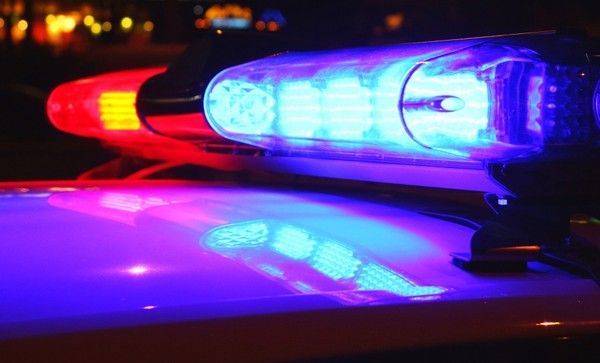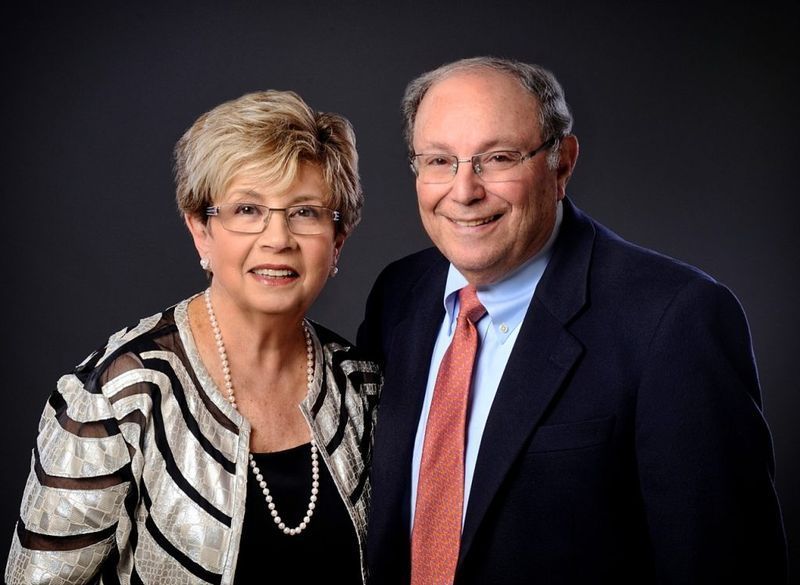Seneca Lake Pure Waters Association (SLPWA) மாநில சுகாதார ஆணையர், ஹோவர்ட் A. Zucker, MD, JD, க்கு, Seneca ஏரியில் அதிக சோடியம் உள்ளடக்கம் இருப்பதால் ஏற்படும் உடல்நல பாதிப்புகள் குறித்து கடிதம் எழுதியுள்ளது. ஆபத்தில் உள்ள மக்கள் மற்றும் அவர்களின் சுகாதார வழங்குநர்களுக்கு ஆபத்து குறித்து அறிவிப்பதற்கான ஒரு தகவல் பிரச்சாரமாக. கடிதம் செனிகா ஏரியில் உள்ள சோடியம் உள்ளடக்கம் மற்ற ஃபிங்கர் ஏரிகளின் அளவை விட 4 மடங்கு அதிகமாக உள்ளது, மேலும் தடைசெய்யப்பட்ட சோடியம் உணவுகள் மற்றும் குழந்தைகளுக்கு குடிநீருக்கான பரிந்துரைக்கப்பட்ட அளவை விட 4 மடங்கு அதிகமாக உள்ளது. ஆனால், ஏரியை அதன் ஆதாரமாகப் பயன்படுத்தும் அனைத்து நீர் விநியோகங்களும் சோடியத்தை பரிசோதிப்பதில்லை. மோசமானது, தற்போதைய ஒழுங்குமுறை கட்டமைப்பிற்கு சோடியத்தால் பாதிக்கப்படக்கூடிய ஏரி கிணறுகளில் இருப்பவர்களின் அறிவிப்பு தேவையில்லை. அதனால் ஆபத்தில் உள்ள பல நபர்கள் அறிந்திருக்கவில்லை. SLPWA நம்புகிறது, செனிகா ஏரியில் உள்ள அசாதாரண சோடியம் உள்ளடக்கம், குறிப்பிடத்தக்க நீர் வழங்கல், மாநிலத்தின் கூடுதல் நடவடிக்கைக்கு உத்தரவாதம் என்று SLPWA இன் தலைவர் மேரி அன்னே கோவால்ஸ்கி கூறினார். சில நேரம், செனிகா ஏரியில் உள்ள உப்புத்தன்மை பற்றி பேசினோம். சமீப காலம் வரை, சோடியம் மற்றும் அதன் ஆரோக்கியத் தாக்கம் 'உப்புத்தன்மையுடன்' இணைக்கப்படவில்லை. இப்போது சோடியம் 'உப்புத்தன்மைக்கு' முக்கியப் பங்காற்றுகிறது என்பது தெளிவாகத் தெரிந்ததால், மாநிலம் இன்னும் அதிகமாகச் செய்ய வேண்டும். Paula Fitzsimmons கருத்துப்படி, ஒரு மருத்துவர் உதவியாளர் மற்றும் SLPWA குழு உறுப்பினர், ஆபத்தில் உள்ள மக்கள் சிறுநீரக நோய், உயர் இரத்த அழுத்தம் மற்றும் இதய செயலிழப்பு போன்ற பிற சோடியம் உணர்திறன் நிலைமைகள் உள்ள குழந்தைகள் மற்றும் பெரியவர்கள். நரம்பு தூண்டுதல்கள், எலக்ட்ரோலைட் சமநிலை மற்றும் திரவ சமநிலைக்கு சோடியம் முக்கியமானது. நோயாளிகள் மற்றும் பயிற்சியாளர்களுக்கு முறையாகத் தெரிவிக்கப்பட வேண்டும். பொது நீர் விநியோகங்களுக்குத் தேவையான எச்சரிக்கை: 20mg/l க்கும் அதிகமான சோடியம் உள்ள தண்ணீரைக் கடுமையாகக் கட்டுப்படுத்தப்பட்ட சோடியம் உணவுகளில் உள்ளவர்கள் குடிக்கப் பயன்படுத்தக் கூடாது. SLPWA சில சமூகங்களுக்கான குடிநீர் பரிசோதனையில் உப்புத்தன்மை ஏன் சேர்க்கப்படவில்லை மற்றும் செனிகா ஏரியில் இருந்து நீரைப் பயன்படுத்தி இடைநிலை அல்லாத சமூகம் அல்லாத நீர் வழங்கல்களை ஆராய்கிறது. மற்றொரு குறிப்பிடத்தக்க பிரச்சனை, செனிகா ஏரியை நீர் ஆதாரமாக பயன்படுத்தும் குடும்பங்களுக்கு அறிவிக்கப்படாதது ஆகும். SLPWA, முழு நீர்நிலைகளிலும் சோடியம் அதிகமாக இருப்பதாகக் கருதப்படும்போது, சுகாதாரப் பாதுகாப்பு வல்லுநர்கள் எச்சரிக்கப்படுவதை உறுதிசெய்யும் வகையில் SLPWA செயல்படுகிறது. ஏரியின் அனைத்துக் குடிநீரிலும் சோடியம் அதிகம் இருப்பதால், இந்த தண்ணீரைக் கொண்டு குழந்தைகளுக்கான ஃபார்முலாவைத் தயாரிக்கக் கூடாது அல்லது ஆபத்தில் உள்ள பெரியவர்கள் இதை குடிக்கக் கூடாது என்று நீர்நிலைப் பகுதியில் உள்ள சுகாதாரப் பராமரிப்பு நிபுணர்களுக்கு பொது சுகாதார அறிவிப்பு எதுவும் வரவில்லை. குடிநீரை சோடியத்தின் ஆதாரமாக நாம் பொதுவாக நினைப்பதில்லை. நாம் பொதுவாக அனைவரையும் அதிக தண்ணீர் குடிக்க ஊக்குவிக்கிறோம்! ஆரோக்கியமான சிறுநீரகங்களைக் கொண்ட பெரும்பான்மையானவர்களுக்கு இது வேலை செய்கிறது என்று Paula Fitzsimmons கூறினார். நீர் வழங்கல் – SodiumGeneva -72 mg/LWaterloo – 79 mg/LWillard மருந்து சிகிச்சை மையம் – 78 mg/LOvid – 72 mg/LWatkins Glen – தெரிவிக்கப்படவில்லை ஹெக்டர் – குடிநீரில் உள்ள சோடியம் பற்றி மேலும் தெரிவிக்கப்படவில்லை: உலக சுகாதார நிறுவனம் (WHO) வழங்கியது. 2015 ஆம் ஆண்டு மார்ச் மாத மதிப்பாய்வு, உலகில் குடிநீர் ஆதாரங்களில் உள்ள மாறுபாடுகள் பரந்த அளவில் இருப்பதாகக் கூறுகிறது.<20mg/liter to over 200 mg/liter. Populations with low sodium intake have lower incidence of hypertension and do not have the age associated increase in blood pressure that we have in the United States. Although salt is absolutely a critical mineral for the human body, there is not agreement on required daily amounts. Guidelines are 120-400 mg in infants and children and 500 mg for adults. Nor is sodium regulated; the EPA has it on the contaminant candidate list which gives the agency authority to monitor and study it further but it is much further down the list of concerns than many other contaminants due to lack of data on human impact. Therefore, there is a general recommendation that a warning be given to at risk populations if the drinking water salinity exceeds 20 mg/liter and there is even some consensus that this level could safely be a little higher.The at risk populations are infants and adults with kidney disease, hypertension, and other sodium-sensitive conditions such as congestive heart failure. Sodium is crucial to nerve impulses, electrolyte balance, and fluid balance. The kidney is responsible for elimination of sodium and therefore must be functioning fully for the sensitive balance of sodium in the bloodstream to be maintained. Infants have undeveloped kidneys; for them, hypernatremia (high sodium in the blood stream) can lead to permanent neurologic damage. Acute sodium toxicity leads to nausea, vomiting, convulsions, worsening of congestive heart failure, and cerebral and pulmonary edema. The association between sodium and hypertension is not completely understood but a high percentage of people with hypertension are sodium sensitive, i.e., sodium intake will raise their blood pressure. The usual medical caution is to limit sodium to 2000 mg/day for these people. A teaspoon of table salt contains about 2300 mg of sodium. The average American consumes 4000-6000 mg daily. With the SLPWA stream monitoring, and the lake monitoring done by Finger Lakes Institute and Community Science Institute, we find variations in the sodium levels. But the actual health recommendation should be made over 20 mg/liter. At this time there is no sodium testing included in the Hector Town or Watkins Glen Annual Water Quality Reports (AWQR). Those that are testing for sodium and finding elevated levels must include the following warning in their annual water quality report:Water containing more than 20mg/l of sodium should not be used for drinking by people on severely restricted sodium diets. About Seneca Lake Pure Waters Association:The 25-year old Seneca Lake Pure Waters Association (www.senecalake.org) is dedicated to 'enhancing and preserving the quality of Seneca Lake'. It received a 2013 U.S. EPA Environmental Quality Award for an outstanding commitment to protecting and enhancing environmental quality and public health. The Environmental Quality Award is the highest recognition presented to the public by EPA. The SLPWA website at http://www.senecalake.org/ has current information about activities and complete comments on the dSGEIS and regulations.
இந்த வீடு ஒருபோதும் செய்ய முடியாத ரொட்டி

